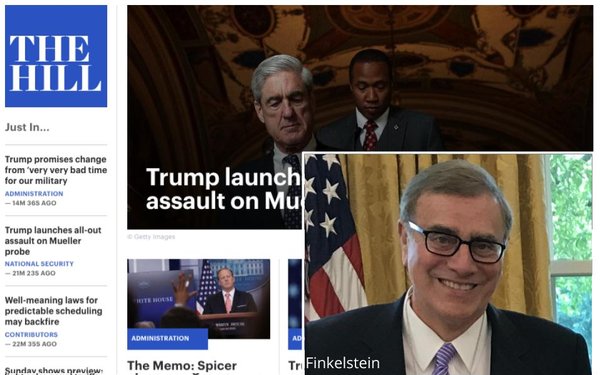
There has
never been a better time to cover politics. Ratings are setting records for cable news networks, while subscriptions are rising for major newspapers, like The New York Times and The
Washington Post, thanks to piqued interest in coverage of the Trump White House, as well as legislative news on Capitol Hill.
Washington insider publishers are benefitting, too
— especially The Hill, which specializes in coverage of Congress, the presidency and political campaigns.
In April, thehill.com delivered 5 million U.S. uniques more
than Politico, according to comScore, marking the fourth consecutive month it attracted a larger audience than its two biggest competitors — Politico and Roll
Call — combined.
advertisement
advertisement
Need more proof that the 22-year-old political journal is the undisputed king of, well, Capitol Hill?
Capitol Hill Publishing Chairman James
Finkelstein cites an implicit testimonial from D.C.’s ultimate stakeholder, noting that @realDonaldTrump has tweeted The Hill’s articles six times more than any other
publication.
May was a big month for The Hill, with Congress in session and a particularly heavy news cycle. That month, it had 30,396,312 U.S. uniques, 15.6% higher than
April’s uniques, according to Google Analytics, and a 118% growth year-over-year. About 40% of The Hill’s traffic comes from mobile.
While he did not give
details, Finkelstein said The Hill is profitable. Revenue has doubled compared to last year, especially for programmatic sales. But Finkelstein, the son of the publication’s founder,
Jerry Finkelstein, is not resting on its laurels.
In
November, The Hill underwent a redesign and introduced a paid subscription product called The Hill Extra. It also introduced several new topic-specific verticals, such as The
Hill Extra: Healthcare. And it expanded its opinion section, which now produces about 40 articles a day, doubling what it published a year ago.
The Hill’s digital
growth is supported by its original print product, which has a circulation of 25,000.
“People in Congress still like print,” Finkelstein said in an interview with
MediaPost Weekend, confiding that the print edition is one of the “most shared” media brands in Congress.
Even so, Finkelstein says he doubts The Hill
will still be published in print three years from now.
“There won’t be any print publications in five years, except maybe for fashion,” he said, explaining
digital’s superiority as “fast, easy and enjoyable.”
The Hill is also turning its attention more toward video. The company named longtime media vet John
Solomon as executive vice president of digital video, and Finkelstein said it plans to hire 20 people in the next four months to strengthen those efforts.
The publication is also
ramping up its advertising staff — especially for video — and will open custom content studios in New York, Washington, D.C., and Los Angeles. Just last week, The Hill
named high-profile publishing executive Richard Beckman as its first president.
Beckman was CEO of Prometheus Global Media when Finkelstein served as that publisher’s owner and chairman.
Finkelstein is proud of The Hill’s efforts
to remain “fair by everyone,” citing a Columbia Journalism Review report that mapped out news publications, based on their conservative or progressive bias. The Hill is
smack-dab in the middle of the graphic.
“Everyone is about a balance. Advertisers need to know you are a fair place to place ads,” Finkelstein said.